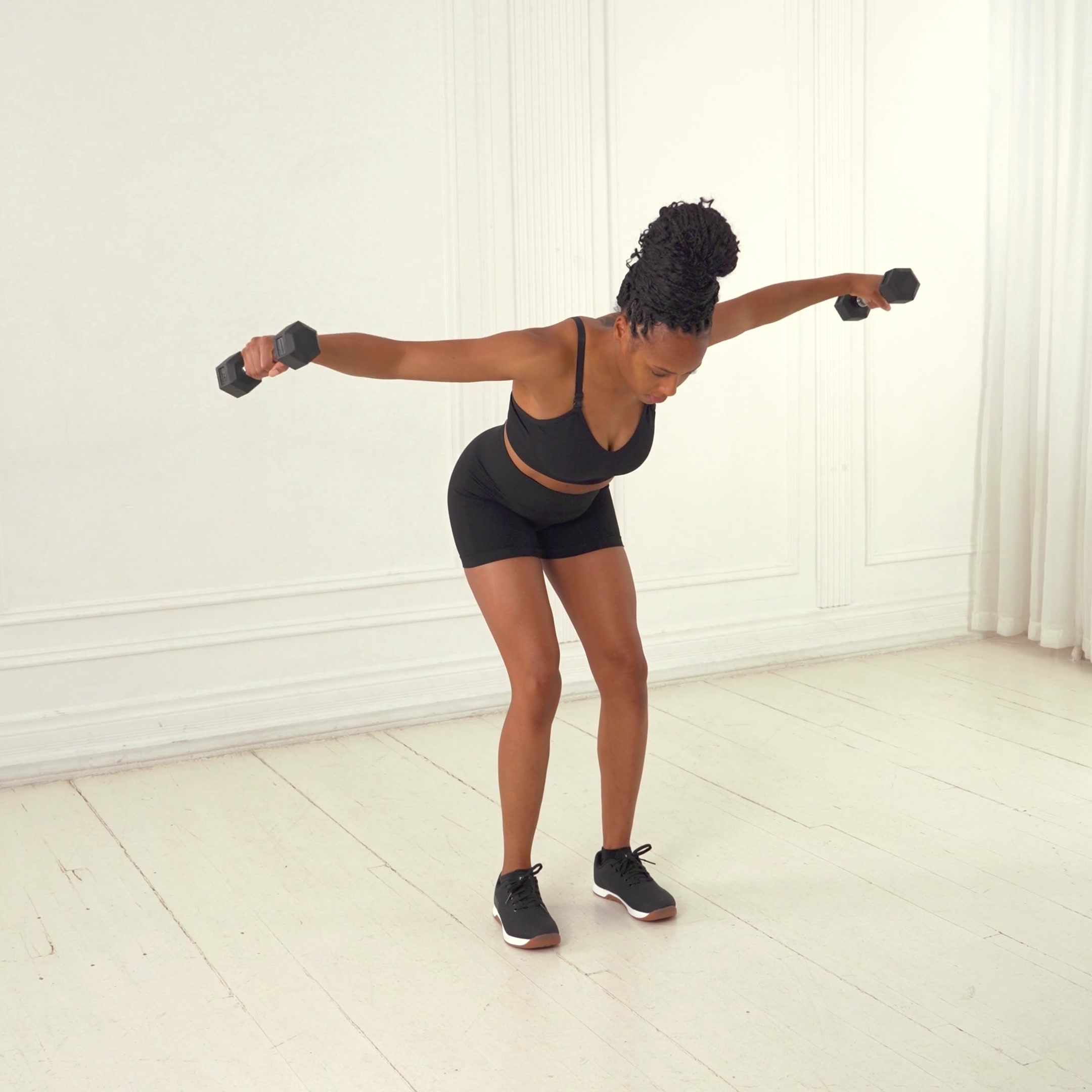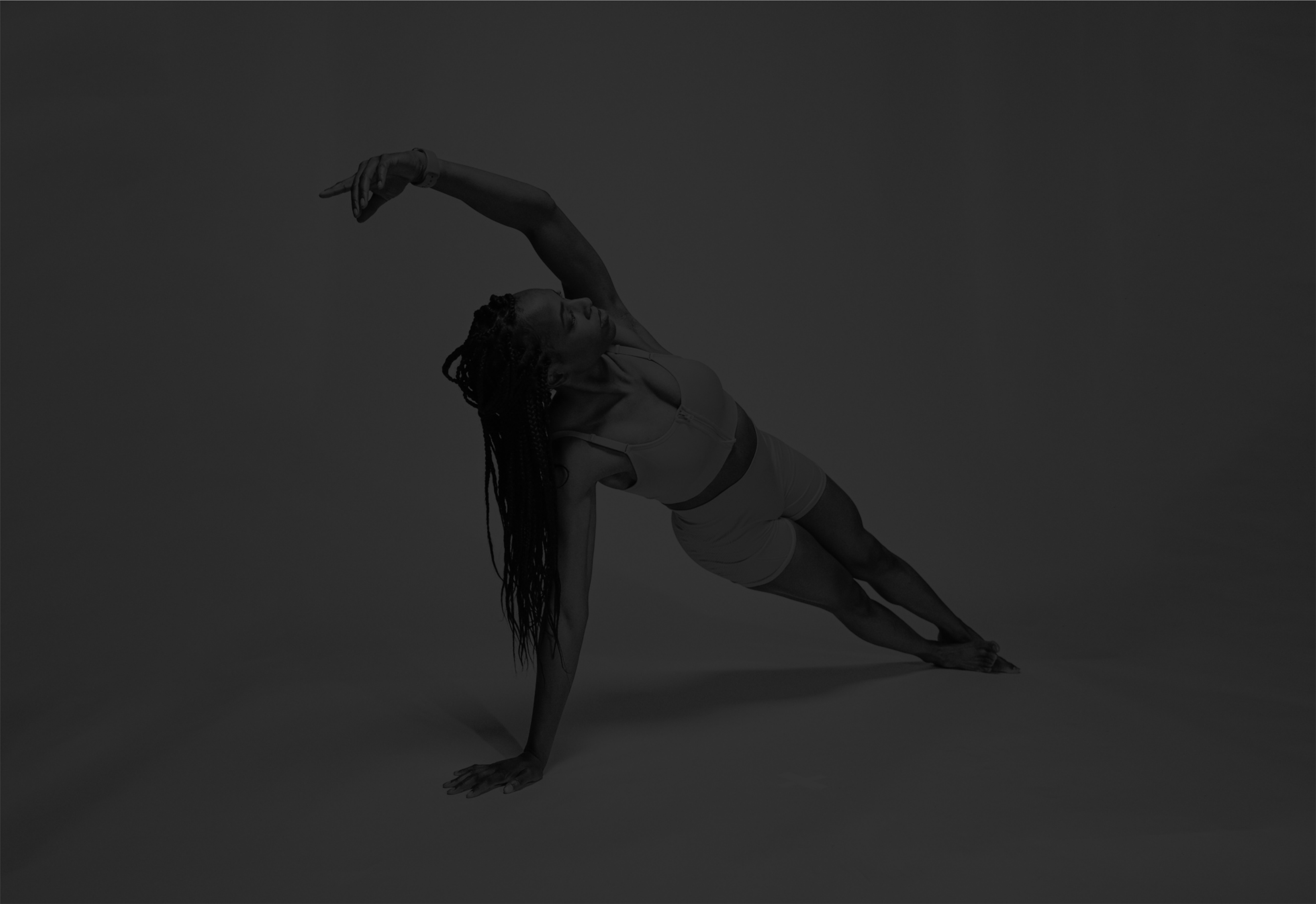Dumbbell Standing IYT
A standing dumbbell exercise performing sequential I, Y, and T arm raises to target rear deltoids, traps, and upper back for shoulder stability and posture improvement.
About Exercise
Equipment
Dumbbells
Difficulty
2/5 • Beginner
Primary Muscle Groups
Shoulders, Traps
Secondary Muscles
Lower Back
Popularity Score
5
Goals
Training Style
Setup Requirements
Requires Rack
No
Requires Bench
No
Requires Spotter
No
Space Needed
Small
Noise Level
Low
Muscle Breakdown
View Muscle MapShoulders
9/10Rear Delts, Medial Delts
Traps
8/10Mid Traps, Lower Traps
Lower Back
4/10Erector Spinae
Programming
Typical Rep Range
10-15 reps
Rest Between Sets
30-60 seconds
How to Perform
Stand with feet shoulder-width apart, slight knee bend, holding light dumbbells at sides with neutral grip. Engage core and keep back straight.
- Raise both arms straight forward to shoulder height forming I, thumbs up.
- Lower arms slowly to start.
- Raise arms diagonally overhead forming Y, thumbs toward ceiling, squeeze shoulder blades.
- Lower arms controlled to start.
- Extend arms out to sides forming T, squeeze shoulder blades.
- Lower arms to start position.
Coaching Tips
Form Cues
- Squeeze shoulder blades
- Keep core braced
- Avoid shrugging
- Thumbs up on Y
- Controlled lowers
- Neutral spine
Breathing
Inhale to prepare and lower, exhale to raise arms in each position while bracing core.
Tempo
3-1-2
Range of Motion
Raise arms to shoulder height for I, Y, T with slight elbow bend; avoid locking elbows or going above shoulders.
Safety
Safety Notes
- Use light weights only
- Stop if shoulder pain occurs
- Brace core to protect back
- Warm up shoulders first
- Avoid if acute impingement
Spotting
Not typically needed; focus on light weights and form for safety.
Common Mistakes
- Swinging with momentum
- Shrugging shoulders
- Arching lower back
- Using heavy weights
- Incomplete range
When to Avoid
- Shoulder impingement
- Acute lower back pain
Flexibility Needed
- Shoulder flexion to 150 degrees
- Scapular upward rotation
Build Up First
- Basic posture awareness
- Core engagement control
Also known as
IYT Dumbbell Raise, Standing IYT
Found this helpful?
Share your thoughts or help us improve this guide.
Similar Exercises
Dumbbell Prone IYT
Dumbbells
Shoulders
Dumbbell Incline Bench IYT
Dumbbells, Incline Bench
Shoulders, Traps

Dumbbell Standing Rear Delt Fly
Dumbbells
Shoulders

Dumbbell Standing Around the World
Dumbbells
Shoulders

Dumbbell Standing Calf Raise

Dumbbells
Calves

Dumbbell Shrug

Dumbbells
Traps

Dumbbell W Press
Dumbbells
Shoulders

Dumbbell Y Press
Dumbbells
Shoulders

Dumbbell Z Press
Dumbbells
Shoulders

Dumbbell Punches
Dumbbells
Shoulders


subscribe to our newsletter
Contact Us
hello@trainfitness.aiFind Us
130 Spadina Avenue, Toronto,
Ontario, M5V 0H4, Canada
©2025 All Rights Reserved
